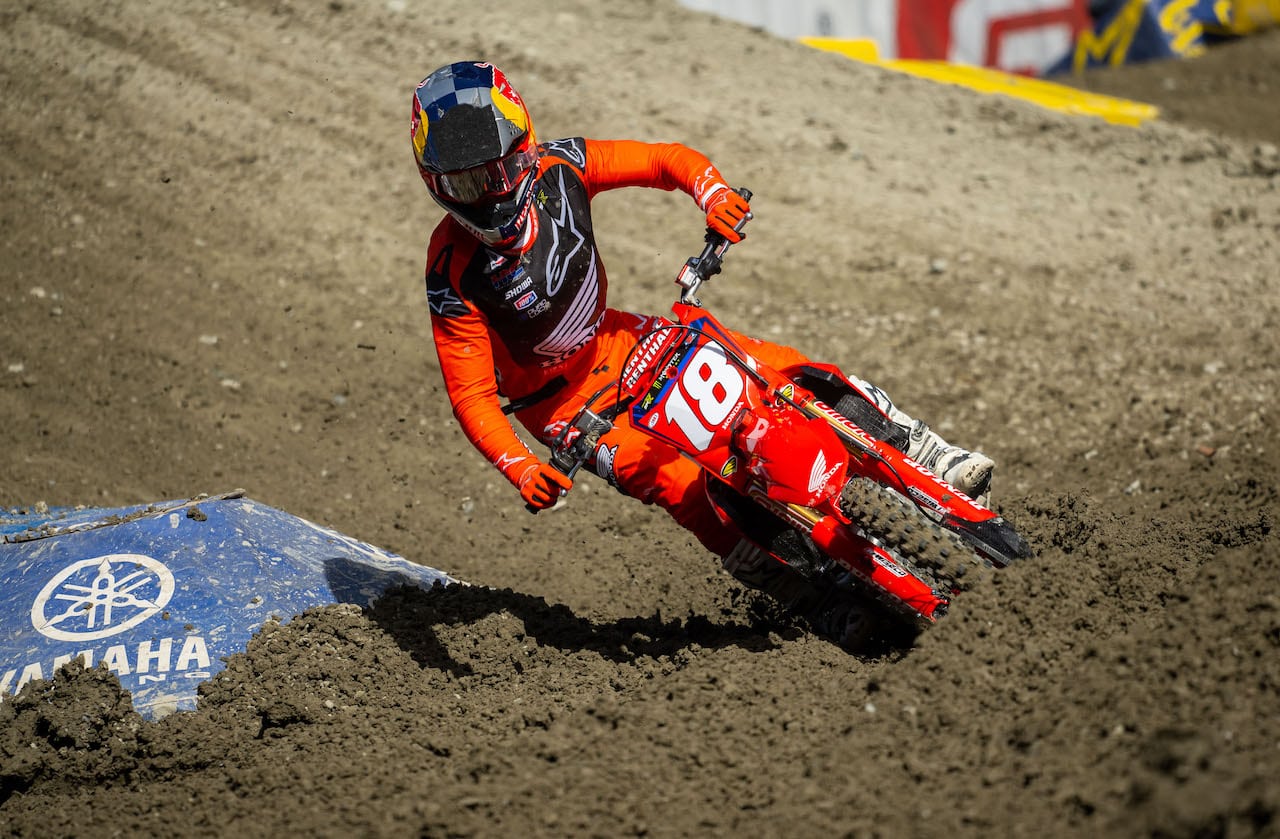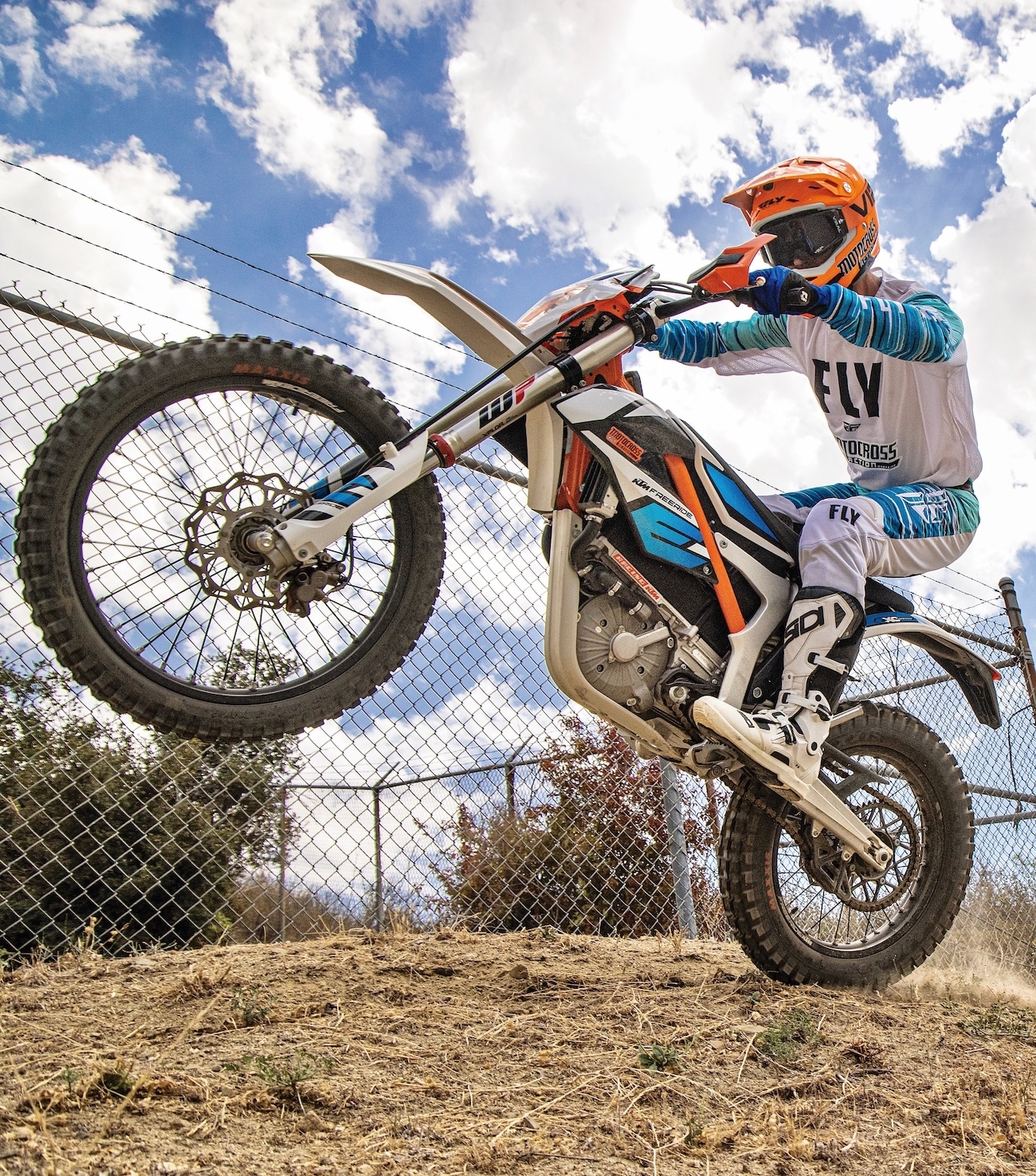TEN THINGS ABOUT THE MOST POPULAR NEW RIDING TECHNIQUE
TEN THINGS ABOUT THE MOST POPULAR NEW RIDING TECHNIQUE
(1) Feet on. The most popular new riding technique in the motocross world right now is to keep your feet on the pegs all the way through the corners. This doesn’t mean that you stand the whole time; it simply means that you leave both feet on the pegs all the way through the turn. Even in Supercross, top Pros are able to keep both feet on the pegs, especially to stay balanced coming out of a turn into a whoop section.
(2) History. Riding with your feet up is not new, there have always been riders who kept their feet on the pegs. However, in the early days of motocross, leaving your inside leg on the peg in a turn had risks because the suspension had less travel, the bikes were smaller and footpegs were closer to the ground, thus, sticking your leg out prevented your foot from getting caught in the dirt and/or being swept under the peg. It is important to note that just because there are modern riders have embraced riding with their feet on the pegs, it is not always the best strategy because sticking your inside leg out helps shift your weight when turning.
(3) Purpose. Because the footpegs are positioned below the center of gravity, the energy transferred from the rider’s legs to the footpegs has a significant effect on the handling of the bike—more so than the rider’s weight on the seat. By keeping your feet on the pegs, you’re able to maintain a more balanced weight on the bike, which leads to smoother corners.
(4) Consistency. Keeping your feet on the pegs in a corner isn’t always better. In some corners, it can be easier and faster for a rider to take his foot off. Ken Roczen and Eli Tomac aren’t keeping their feet on the pegs full-time, but they are keeping them on more often than not. The big benefit of keeping your feet on the pegs is that it increases consistency. With fewer movements going on, it’s easier to stay locked in and focused on executing a proper turn and getting into the next straightaway.
 By standing up, Hunter Lawrence maximizes the effect of the feet on riding style.
By standing up, Hunter Lawrence maximizes the effect of the feet on riding style.
(5) Saving energy. When you leave your feet on the pegs, your body isn’t spending energy to lift and extend your leg (with the added weight of boots and knee protection). Second, it lessens fatigue on your arms and shoulders because it naturally enables you to grip more with your legs. Imagine riding a bike without footpegs; the bike would be extremely tiring to hold onto. Now imagine riding with only one leg on the bike—less tiring, but still more tiring than having both legs on. This example illustrates why leaving both legs on helps you save energy.
(6) Foot position. To reap the full benefit of keeping your feet on the pegs all the way through a corner, you need to be mindful of how your feet are positioned on the pegs. You must ride on the balls of your feet. If you don’t, your boot can catch the inside rut and twist your knee. Also, riding on the balls of your feet allows you to flex through your ankles, helping you absorb bumps.
 The Lawrence brothers are exceptionally good at this technique. Here Jett demonstrates at the 2023 Seattle Supercross.
The Lawrence brothers are exceptionally good at this technique. Here Jett demonstrates at the 2023 Seattle Supercross.
(7) How-to. Start practicing the feet-on-the-pegs drill in sweeper turns. With more momentum and a bigger turn, it’ll be easier to adapt to the technique of hitting a corner without your inside leg being a “crutch” to save you. Standing deeper into the turn is a natural byproduct of keeping your feet on. Once you try the technique in sharper, more technical turns, be mindful to look farther ahead and squeeze the bike with your legs. This will keep you from dabbing your inside leg.
(8) Fast feet. One technique based on the same principles is “fast feet.” It means your foot spends as little time off the peg as possible. The best riders nowadays get their feet back to the pegs quickly, knowing that they’ll be able to give it more throttle and go faster with increased traction when both feet are on.
 With no shift lever, no rear brake pedal and no clutch, electric bikes, like the KTM Freeride, are good trainers for riding feet up.
With no shift lever, no rear brake pedal and no clutch, electric bikes, like the KTM Freeride, are good trainers for riding feet up.
(9) Electric. Electric dirt bikes don’t have manual transmissions, eliminating the need for a clutch lever and a shifter. Many electric bikes come with a hand lever to operate the rear brake. This frees up both feet to stay on the footpegs full-time. Less movement with your feet makes it easier to ride and easier to execute the proper technique.
(10) Helpful tips. To help you stay connected to the bike and keep your feet in the correct position, you can sharpen your footpegs, add grip tape on the side-number panels, and add a gripper seat cover. Each trick helps you stick to the bike and makes it easier to maintain proper technique.






Comments are closed.